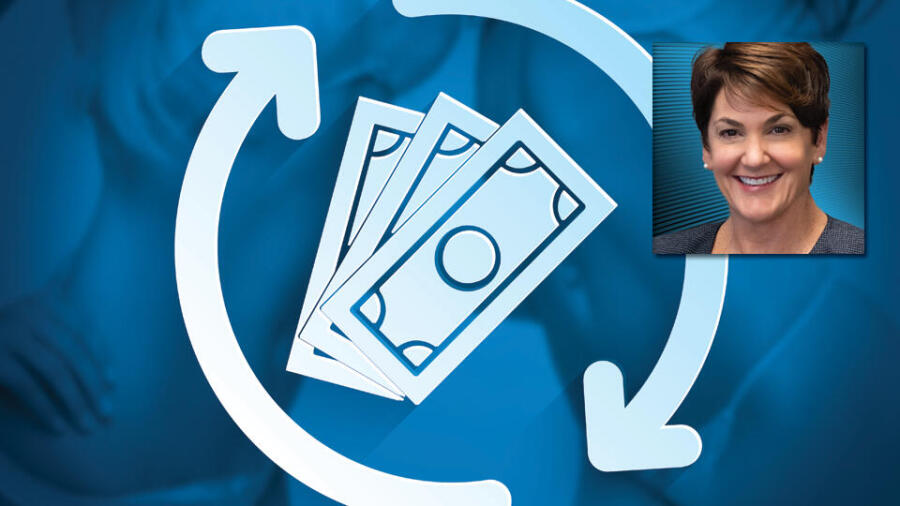Online e-commerce continues to grow and with this, so does the potential for chargebacks. According to Visa, in 2015 over 2.6 million chargebacks were initiated because cardholders didn’t recognize the transactions and nearly a quarter of them were related to digital goods. Card brands and developers quickly went to work looking for solutions, and many of us use them today.
As we all work toward the goal of eliminating the need for chargebacks altogether, there are some big changes happening in the mitigation world. I’m not the most technical person, but luckily, I’m surrounded by a team of experts who are — so, together we looked at the major changes and what they can mean for you.
The [mitigation] programs of both Visa and Mastercard are similar, with instant reporting that occurs in near real-time through a series of calls to prevent chargebacks …
VMPI Gone?
The Visa Merchant Purchase Inquiry Program, or VMPI, no longer exists. What happened? Why? These are the questions many merchants have been asking. Don’t worry, this dispute resolution service isn’t gone forever, it just became part of the Visa Resolve Online program known as VROL and the good news is, it could help lower fees. Last August, Visa acquired Verifi, a leader in technology solutions that reduces chargebacks. The free VMPI service where you could connect directly through Visa is no longer available.
Now, in order to use the new incarnation of VMPI, processors like us at Segpay must go through Verifi. With Verifi “Resolve,” Visa says merchants will have access to resources that link all parties in the dispute management process. They’ll be connected in near real-time to do a few things like resolve disputes before they become chargebacks, give buyers and sellers data-driven tools to improve the customer experience and create an end to end solution. This month, Visa will be rearranging VROL to provide greater emphasis to the Resolve integration.
Under Visa’s dispute rules, all issuers and acquirers that are members of Visa must use VROL to respond to or carry out any retrieval requests. While use is voluntary for some aspects of the dispute management process, we’re hopeful integration will improve over time to more closely align with Mastercard’s system.
Mastercard's Eliminator and Alerts
Chargeback resolution services continue to evolve for other card brands too. Mastercard is now using the Ethoca Eliminator solution. It’s very similar to what Visa is using through Verifi. The Eliminator program aims to mitigate incoming friendly fraud disputes on the spot, providing cardholders with instant access to real-time merchant intelligence the moment a call is made to a bank or an inquiry has been made through their desktop or mobile banking app.
Mastercard says that, over time, the Eliminator will help to retrain the cardholder and provide clarifying information they need to recognize their own purchases, reducing friendly fraud and creating a simpler payment process with less friction. This month, Mastercard will connect every bank with the Eliminator system and participation in all aspects of the program is mandatory.
The Call Process and Open Communication
The programs of both Visa and Mastercard are similar, with instant reporting that occurs in near real-time through a series of calls to prevent chargebacks. We thought it was important to point out the first three calls being used at Visa.
A call “type one” is when an issuing bank has an opportunity to ask the merchant for more details in real-time. The merchant would have the opportunity to send the transaction details back to the bank with information like login, IP, 3D Secure and more, so the customer could recognize their transaction or so the issuing bank can deny the transaction and say it’s not eligible for a dispute. This process is known as a deflection.
A call “type two” fights fraud disputes using TC40 data to get the alert and allows the merchant to choose what to do with it. This process will have a subscription fee per descriptor.
Lastly, a call “type three” sends a notice to the merchant telling them that a chargeback is on the way so they can block the cardholder and stop delivery of any product or service faster than the traditional chargeback channel.
Like Magic, Turning a Chargeback into a Refund
Visa and Mastercard have taken very different approaches here. Mastercard has mandated that all issuers must participate in the program. Visa has said all issuers must support the program, but participation is optional.
Any direct Mastercard alerts will result in a chargeback, but a merchant can now review the alert and refund the dispute prior to the chargeback cycle completing. This allows for complex decision-making based on a specific customer and their activity. Visa has the Rapid Dispute Resolution system in place where a merchant can provide a fixed set of rules (bin, date, amount, currency, purchase identifier, dispute category and dispute condition code) when, if matched, will automatically refund the dispute prior to the chargeback cycle completing.
Both systems give a merchant the ability to turn a chargeback into a refund, eliminating the inevitable chargeback fee, and circumventing the excessive chargeback monitoring program. In the end, these are all positive changes, and we’re hopeful that the systems will continue to mature and provide an even greater ability to manage disputes in a responsible manner in the future.
Cathy Beardsley is president and CEO of Segpay, a global leader in merchant services offering a wide range of custom financial solutions including payment facilitator, direct merchant accounts and secure gateway services. Under her direction, Segpay has become one of four companies approved by Visa to operate as a high-risk internet payment services provider. Segpay offers secure turnkey solutions to accept online payments, with a guarantee that funds are always safe and protected with its proprietary Fraud Mitigation System and customer service and support. For any questions or help, contact sales@segpay.com or compliance@segpay.com.






